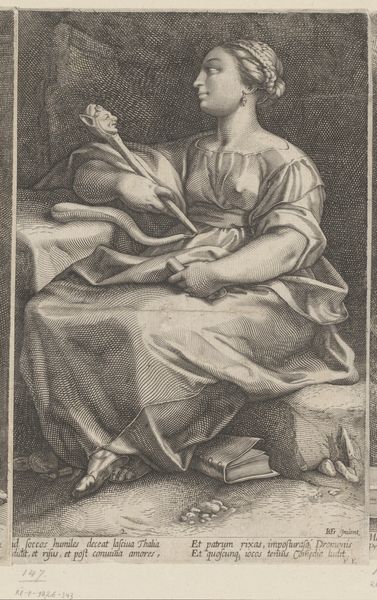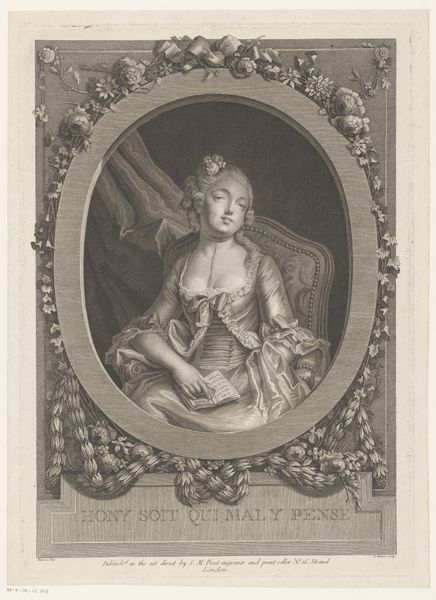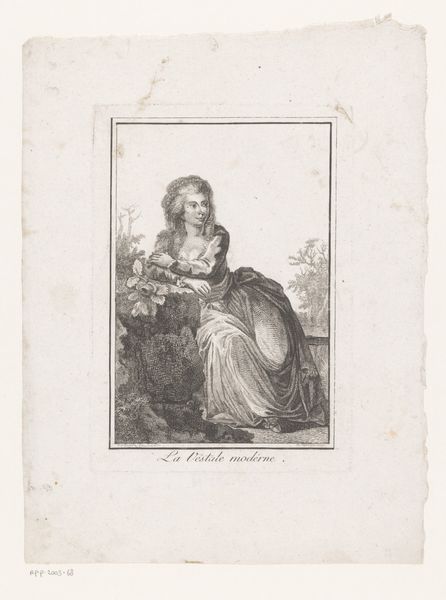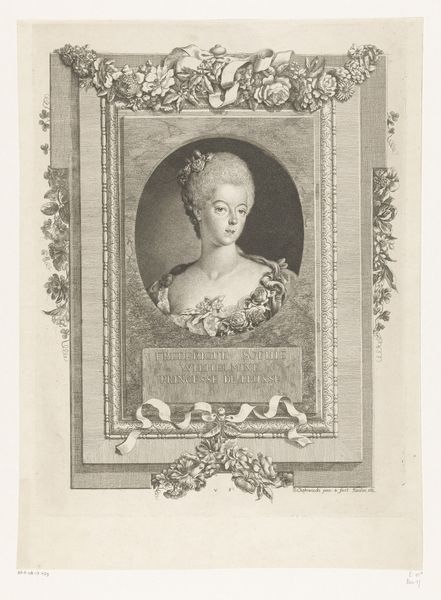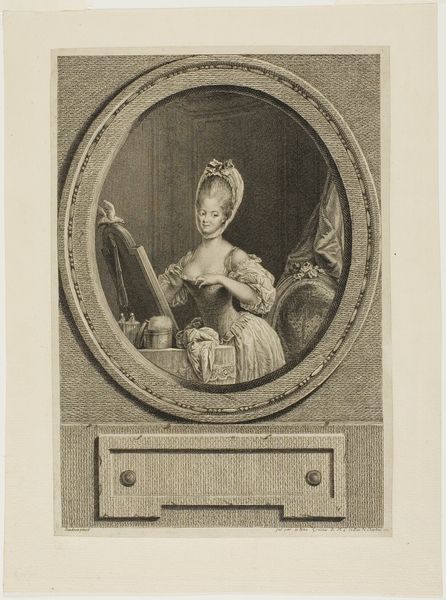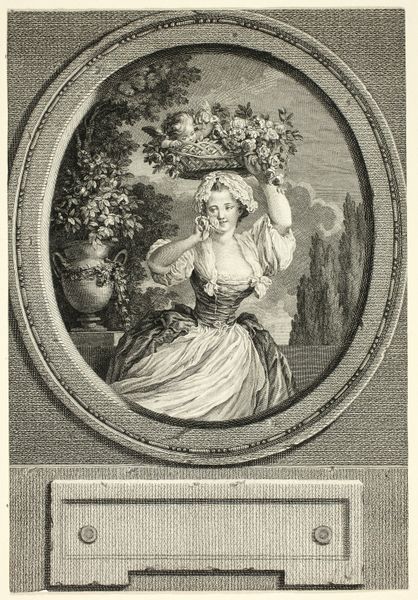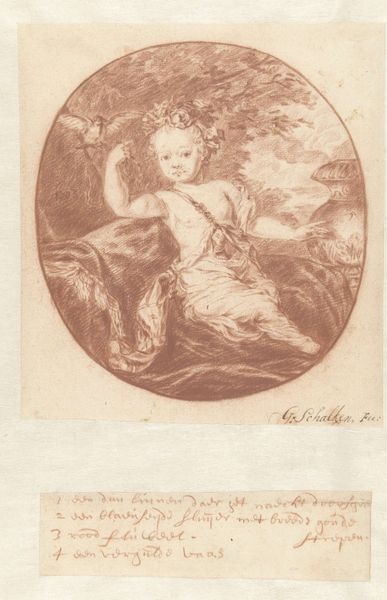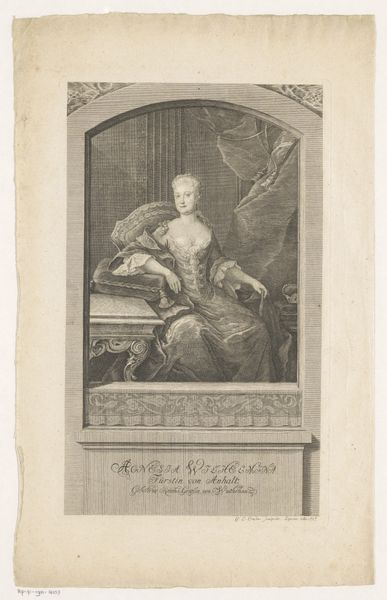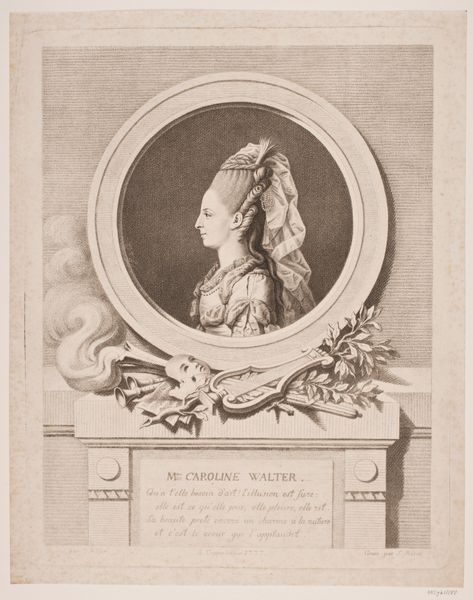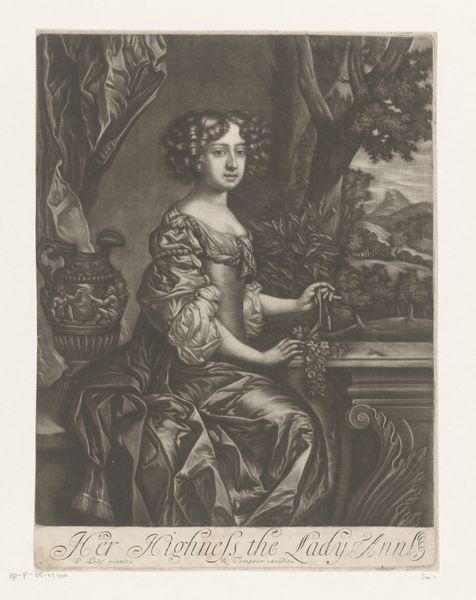
drawing, print, etching, paper
#
portrait
#
drawing
# print
#
etching
#
landscape
#
paper
#
genre-painting
#
rococo
Copyright: Public Domain
Editor: This is an etching by Louis Joseph Masquelier entitled "Jusque". It’s undated but the style feels very Rococo to me. I’m immediately drawn to the oval frame within the print, almost like a window looking into a peaceful scene. What do you make of it? Curator: The composition presents a compelling interplay of geometric forms. Note the double oval, framing a softer, organic landscape. Observe how the etching technique itself creates textures. Do you see how the lines vary in density and direction, creating a sense of light and shadow that models the figure? Editor: Yes, the hatching really defines the woman's dress and the surrounding foliage. I am curious about how this contrast directs our gaze to certain areas. It looks like it is very controlled. Curator: Precisely! Masquelier guides the eye through strategic placement of light and dark. Consider the texture around the outer edges in contrast with the smooth frame around the inner oval, highlighting the artifice involved. Ask yourself, how does that tension influence the narrative that is at play? Editor: I hadn’t thought about that contrast intentionally framing a constructed world before. So, focusing on its forms, rather than the scene represented, offers a richer reading of the piece. Thanks for highlighting those material qualities and formal techniques! Curator: Indeed. By observing these formal devices, one gains insight into the artist's technique and purpose. A formal analysis helps you to find the work’s intentional structure, in turn becoming sensitive to visual relationships.
Comments
No comments
Be the first to comment and join the conversation on the ultimate creative platform.


